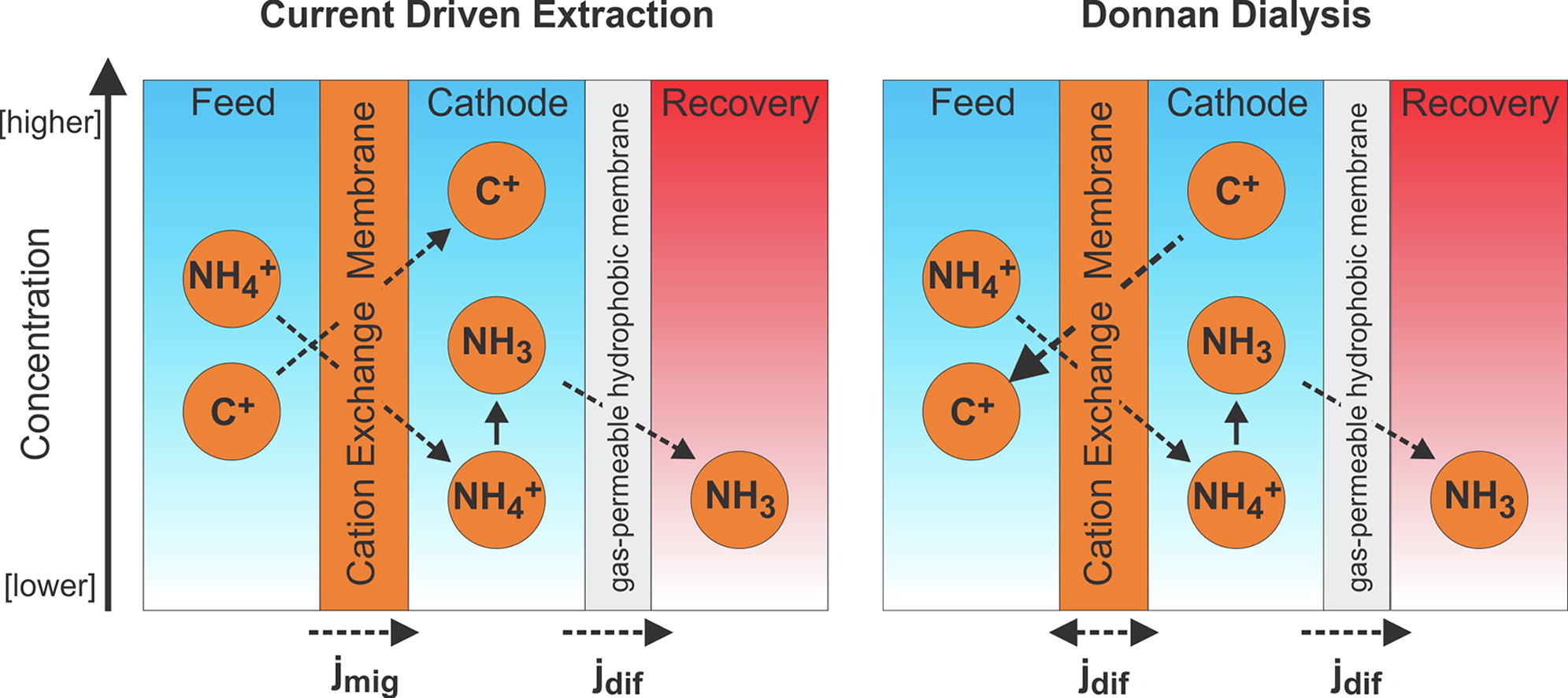
Exploiting Donnan Dialysis to Enhance Ammonia Recovery in an Electrochemical System
Authors: Mariana Rodriguesa,b, Tom Sleutelsa, Philipp Kuntkea,b, Douwe Hoekstraa, Annemiek ter Heijneb,⁎, Cees J.N. Buismana,b, Hubertus V.M. Hamelersa
a Wetsus, European Centre of Excellence for Sustainable Water Technology, Oostergoweg 9, 8911MA Leeuwarden, The Netherlands
b Department of Environmental Technology, Wageningen University, Bornse Weilanden 9, P.O. Box 17, 6700 AA Wageningen, The Netherlands
Published in: Chemical Engineering Journal, Volume 395, 125143 (1 September 2020)
Abstract: A hydrogen recycling electrochemical system (HRES) can be used for energy efficient removal of TAN (Total ammonia nitrogen, ammonium and ammonia) from wastewater. When a current is applied, a concentration gradient of cations builds up between catholyte and feed solution. When no current is applied, cations (Na+ and K+) diffuse back to the feed solution from the catholyte as a result of the concentration difference. These cations will be exchanged for other cations (NH4+ and H+) to maintain electroneutrality: a phenomenon known as Donnan Dialysis. In this study, Donnan Dialysis was explored as a strategy to enhance the TAN removal efficiency in an HRES. In continuous operation, Donnan Dialysis did not clearly affect TAN removal efficiency. In batch operation, Donnan Dialysis resulted in (10 ± 2%) higher removal efficiency compared to operation without Donnan Dialysis. By analyzing transport numbers of the different cations, we show that in batch mode, Donnan Dialysis indeed exchanges mostly NH4+ with Na+ and K+. In continuous mode, however, more protons were transported from anode to cathode. Batch operation with Donnan Dialysis achieved similar removal to continuous operation but consumed less energy (between 7.8 kJ gN−1 and 10.1 kJ gN−1) than continuous operation. Donnan Dialysis can be a good strategy to enhance TAN recovery in batch operation mode since additional ammonium was removed at a lower energy input.
Download: link to pdf
DOI: 10.1016/j.cej.2020.125143
License: CC-BY4.0
